Muscovy ducks, though now common throughout the world as a domesticated species, originally lived in Central and South America. These ducks are somewhat colorful, though their patterns and color vary from individual to individual.
One of their most notable characteristics is their red, warty-looking face. In many males, the wart-like growths are bright red. Read on to learn about the Muscovy duck.
Description of the Muscovy Duck
These ducks are relatively large creatures, and the biggest males weigh up to 15 lbs. or more. They measure between 26 and 33 in. long, and their wingspan is nearly 5 ft. across. Most Muscovy ducks have black feathers, often with large white blotches, and iridescent green wings.
Depending on the bird, they have few, or many, red or reddish gray wart-like growths on their face. Males have wartier faces than females, and are generally heavier.
Interesting Facts About the Muscovy Duck
You often see these ducks in parks and gardens, both as domestic birds and feral birds. Despite being so common, most people do not know very much about them.
- Homegrown –Muscovy ducks are one of just two species of birds in the Americas that humans have domesticated; the other species being the turkey. We brought domesticated birds to North, Central, and South America, but domesticated few species after we arrived. Muscovy ducks are one of the few that we domesticated.
- Old Bird – Though the domestication process took a long period of time, Muscovy ducks began that process prior to European settlement in the Americas. The natives of South America were already keeping and breeding Muscovy ducks when Spanish conquistadors made landfall.
- Treed! – Most large waterfowl do not fly up into trees. Their webbed feet and heavy bodies make it difficult to grip the branches. Muscovies, however, are quite adept at balancing on branches. They have large claws, which they use to hold on tight so they can sleep in the trees at night.
- Interlopers – Sometimes nesting ducks become the unknowing substitute parents for another species of duck. Black-bellied whistling ducks sneak into the nests of Muscovy ducks and lay eggs while they aren’t looking! Then the Muscovy incubates and cares for the chicks. This is just like the behavior of the cuckoo bird with other songbirds.
Habitat of the Muscovy Duck
Like most waterfowl, Muscovy ducks like to live in lakes, ponds, streams, rivers, swamps, and other water bodies. They prefer slow moving water, which allows for easier foraging and swimming.
These ducks also thrive in urban areas, like parks, golf courses, and retention ponds. Because of this, many feral populations live across the United States, particularly Texas and Florida.
Distribution of the Muscovy Duck
This duck’s natural range spreads from Mexico down into South America. In Mexico, these birds live primarily near the coast, both on the eastern and western sides. The same goes for Central America.
In South America, however, this species lives across much of the Amazon River Basin. Outside of their natural range, these ducks inhabit parks and gardens in the United States, and the United Kingdom.
Diet of the Muscovy Duck
Like most ducks, this species feeds on a mixture of plants and small animals. They usually search for food in the water or near the water’s edge. Some of the plants they eat include grass, seeds, roots, and aquatic vegetation.
They also hunt for small insects, spiders, shrimp, worms, snails, fish, and lizards. Birds in urban areas like parks and golf courses also eat a variety of other foods, usually things humans leave behind or intentionally feed them.
Angel Wing Syndrome
Sadly, humans feeding ducks of any kind in parks is incredibly detrimental to the birds. However, it is only bad for them if they eat “junk” foods.
When people go to the park to feed the ducks, most bring bread. Sadly, bread and other high calorie food items cause a condition in many types of birds called “angel wing.” Birds with angel wing develop twisted wing joints, and they lose the ability to fly.
As we all know, no one wants to be a sitting duck, especially not a duck. Birds that cannot fly fall prey to predators quite easily. However, we’re not telling you that you can’t feed your local ducks! Instead, bring them nutritious foods that are low in calories. Some great things to feed include commercial duck feed, grapes cut in half, birdseed, or frozen peas (thawed first).
Muscovy Duck and Human Interaction
In their natural range, Muscovy ducks have healthy populations in most areas. The IUCN lists them as Least Concern. However, this does not mean that all regions have healthy populations, and in some areas human activity threatens this species.
Their primary threat is habitat destruction, but they are quite adept at living in urban areas. This is probably why their populations are healthy and thriving.
Domestication
Humans began domesticating Muscovy ducks hundreds of years ago. Breeders select the most docile birds, with the largest bodies and the prettiest feathers, to reproduce. Domestic and wild Muscovy ducks are very different birds. Some feral populations are domestic, and others are wild birds.
Does the Muscovy Duck Make a Good Pet
Yes, domesticated Muscovy ducks make good pets for the right person. If you are thinking about adding a Muscovy duck to the family, there are a few things to consider.
You must live in an agricultural zoned area, because Muscovy ducks are livestock. You must also have more than one, because they are social birds and will be sad on their own. Finally, you need a large water source, preferably a pond.
Muscovy Duck Care
In zoos and on farms, people have perfected Muscovy duck care for centuries. They need plenty of water to swim and forage in, and several other Muscovy ducks for company. These birds often live alongside other large waterfowl as well.
Commercial pelleted waterfowl or duck feed is readily available, and ensures your ducks are happy and healthy with a balanced diet.
Behavior of the Muscovy Duck
These birds are social, and often swim in pairs or small groups. Males are aggressive towards one another, but they are not territorial. One male breeds with several female ducks. He guards them from other males, and from predators.
Fighting ducks fly at one another and use their wings to batter their opponent. The strongest male gets to breed with several females.
Reproduction of the Muscovy Duck
Unlike most other waterfowl, Muscovy ducks build their nests in trees, though they do sometimes build them on the ground. Females lay anywhere from 8 to 15 eggs per clutch, and incubate them for about a month.
Once the ducklings hatch, they follow their mother into the water. She protects them from predators and shows them where to find food until they are ready to survive on their own.

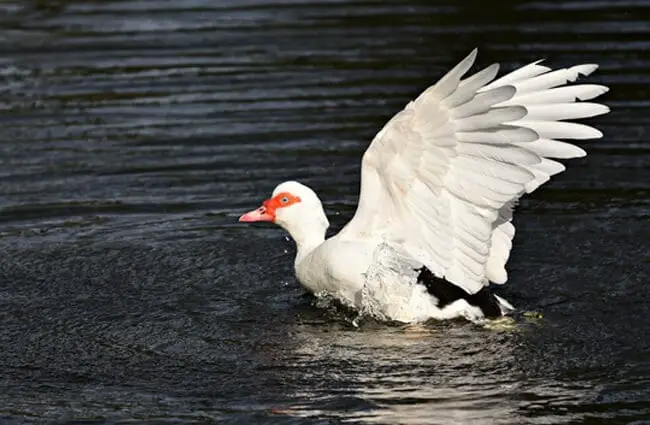
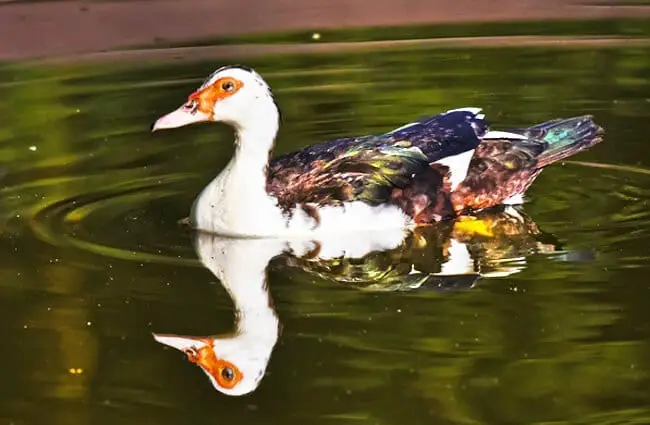
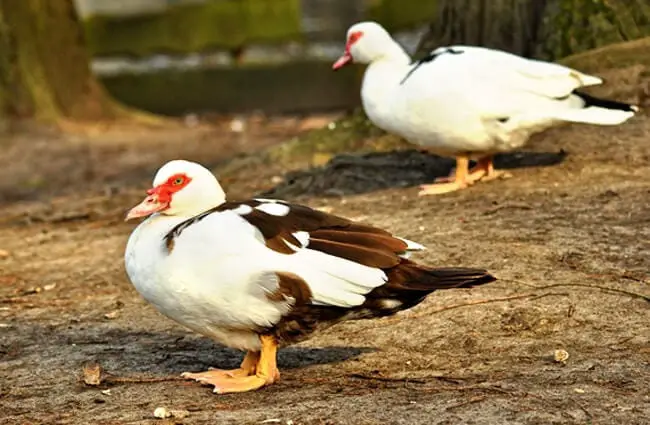



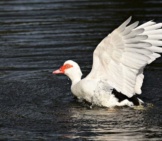
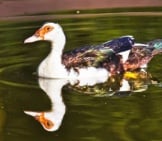
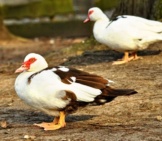
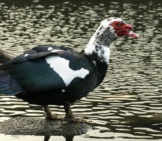
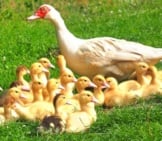
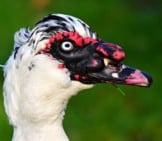
![Red Angus Closeup of a beautiful Red Angus cowPhoto by: U.S. Department of Agriculture [pubic domain]https://creativecommons.org/licenses/by/2.0/](https://animals.net/wp-content/uploads/2020/03/Red-Angus-4-238x178.jpg)












![Red Angus Closeup of a beautiful Red Angus cowPhoto by: U.S. Department of Agriculture [pubic domain]https://creativecommons.org/licenses/by/2.0/](https://animals.net/wp-content/uploads/2020/03/Red-Angus-4-100x75.jpg)

